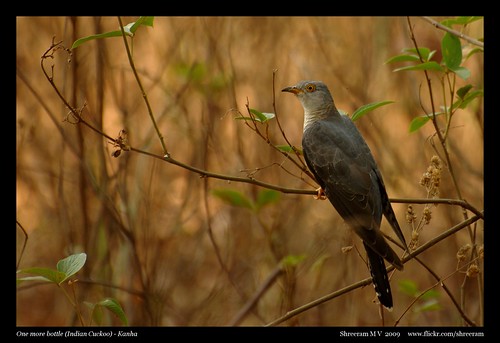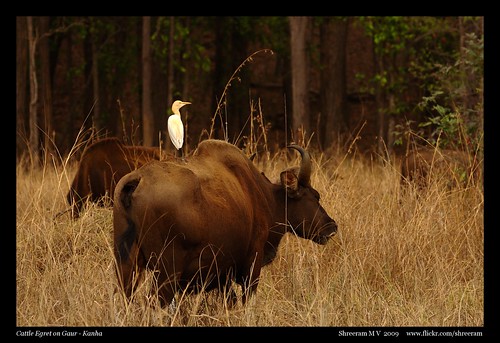My visit to Kanha was my first ever to any of the national parks in Central India. I was part of a group of wildlife photographers participating in
Kalyan Varma's "Tiger Photography Tour".
I'll share my Kanha experiences over 3 posts. My first post - this one - is about the park, an overview of the animals and the workshop. My next post would be about the birds of Kanha. The concluding post would be about Kanha's biggest attraction - Panthera Tigris Tigris - and how humans interfere with the park.
THE PARKKanha is spread over 2000 square kilometres. It has an interesting mix of habitats - moist deciduous forests, dry deciduous forests, valley meadows and plateau meadows. This gives a fantastic range of lifeforms here. Our guide told us that there are 4 types of grass, other than bamboo. Forests are interspersed with evergreen sal trees and deciduous trees. There are around 29 species of mammals and 280 species of birds.
The park is divided into 5 zones - Kisli, Kanha, Mukki, Bhaisanghat and Suphkar. Our safaris were restricted to the first two. More details on Kanha are available
here and
here.
WORKSHOPThere were 6 participants in this workshop, split into 2 groups for the safaris. This gave us all ample time to interact with Kalyan and get his feedback. Kalyan's workshop, as always, is a pretty informal setting. There were a few introductory sessions on the basics of wildlife photography and equipment. These were interspersed with videos and photographs to give a glimpse of the best.
There were 6 safaris spread over 4 days. Kalyan joined each group on alternate trips and helped us along. We also got to use his photography gear. All in all, it was total fun and I carried back a lot of learning (from mistakes made and experiences from fellow participants).
ANIMALS AT KANHAWe saw a wide variety of mammals at Kanha. The most glamorous and majestic of them all, the tiger, made its appearance quite a few times. Wild dogs showed themselves for a brief moment before disappearing into the meadows. Although we didn't see a leopard, the other group came across a sloth bear and a jungle cat.
The most exclusive herbivore at Kanha is the Barasingha. The hard-ground sub-species here is not found anywhere else in the world. Recovering from the brink of extinction, this magnificent species still has a large area cordoned off for the breeding center. We were very fortunate to witness more than 120 individuals crossing the path in front of us one morning. I can never forget that sight!
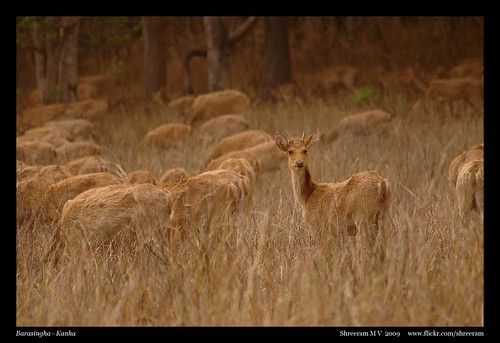
The Chital (or Spotted Deer) were abundant. They are all over the place and in herds of all sizes. Being the mating season, it was fun to watch the males display (sharpening horns and decorating them with grass and leaves), fight to assert supremacy and chase females. It took me some time to distinguish between their runting call and alarm call, both of which were fairly common.

The Barking deer, or Munjtac, made a brief appearance. Sambar, the tiger's favourite, can be seen early in the morning or late in the evening. I always saw them on the hills or in the forest. The closest they came to a meadow was when they were quenching their thirst at a waterhole.
I've never seen such huge herds of Gaur before. Also known as the Indian Bison, this is the largest of all cattle in the world. They seemed unperturbed by the traffic around them and their grazing hardly ever stopped. In fact, on the last day of our trip, at least 40 vehicles had to stop on the way back as a gaur was blocking the way!
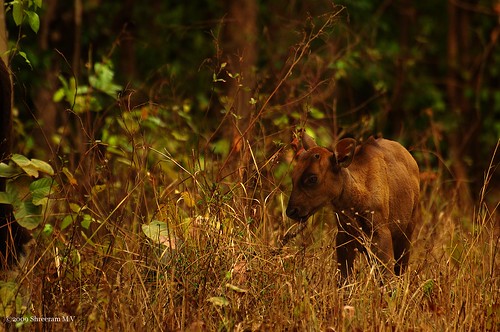
Wild boars, piglets in tow were seen in large groups. These animals were difficult to photograph at close quarters as they chose to maintain a distance from human activity.
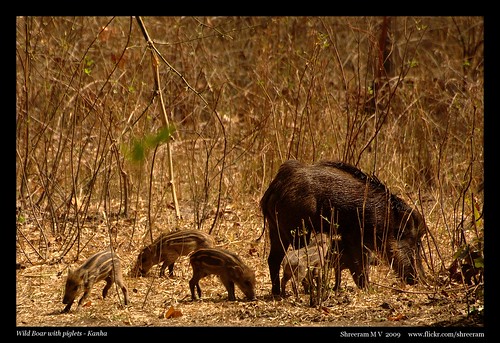
Gray Langurs were in their most emotive moods. They were a treat to watch and photograph, especially because they sat at eye-level most of the time.
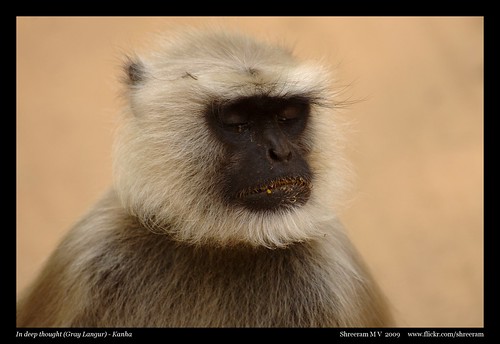
One morning, we decided to drive up the plateau to Bamhni Dadar. The views here are fascinating. But what made the trip special was sighting a Chousingha (of the Four-horned Antelope). A very elusive and rare animal, this individual was marking its territory with the "tears" rolling down its nose.
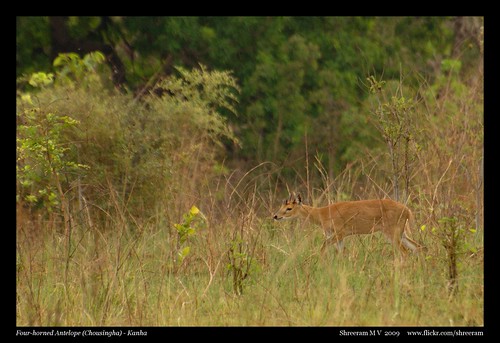
The only reptile we spotted was the Bengal Monitor Lizard. It was browsing for food on the ground and was beautifully camouflaged against the fallen leaves.
 LOGISTICS
LOGISTICS How do you get to Kanha? For starters, Kanha is located in Madhya Pradesh. The closest airports to Kanha are Nagpur (around 250km) and Jabalpur (around 190km). From most places, these are also the most easily accessible railway stations. I couldn't find any straightforward bus routes from Nagpur to Kanha; I shared a cab with other workshop participants. There is a direct bus from Jabalpur to Kanha; one of the workshop participants traveled by the bus.
We stayed at the Celebration Van Vilas resort at Mocha village. There are a number of other options there, from very inexpensive ones to ultra-luxury ones.
Kanha is open to visitors from November 01 to June 30. The park closes for the monsoons from July through September every year. There are 2 safaris allowed every day - from 5AM to 11PM and 4PM to 7PM. Park entry fees are Rs.680 per vehicle (no private vehicles allowed). This includes camera and guide charges. The safari Gypsy cost us Rs.1500 for the morning safari and Rs.1000 for the evening safari.
